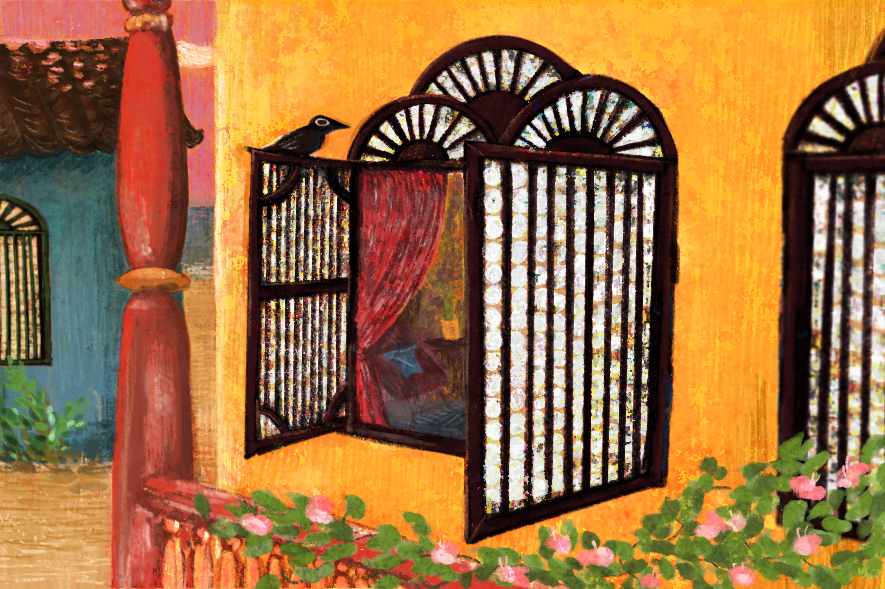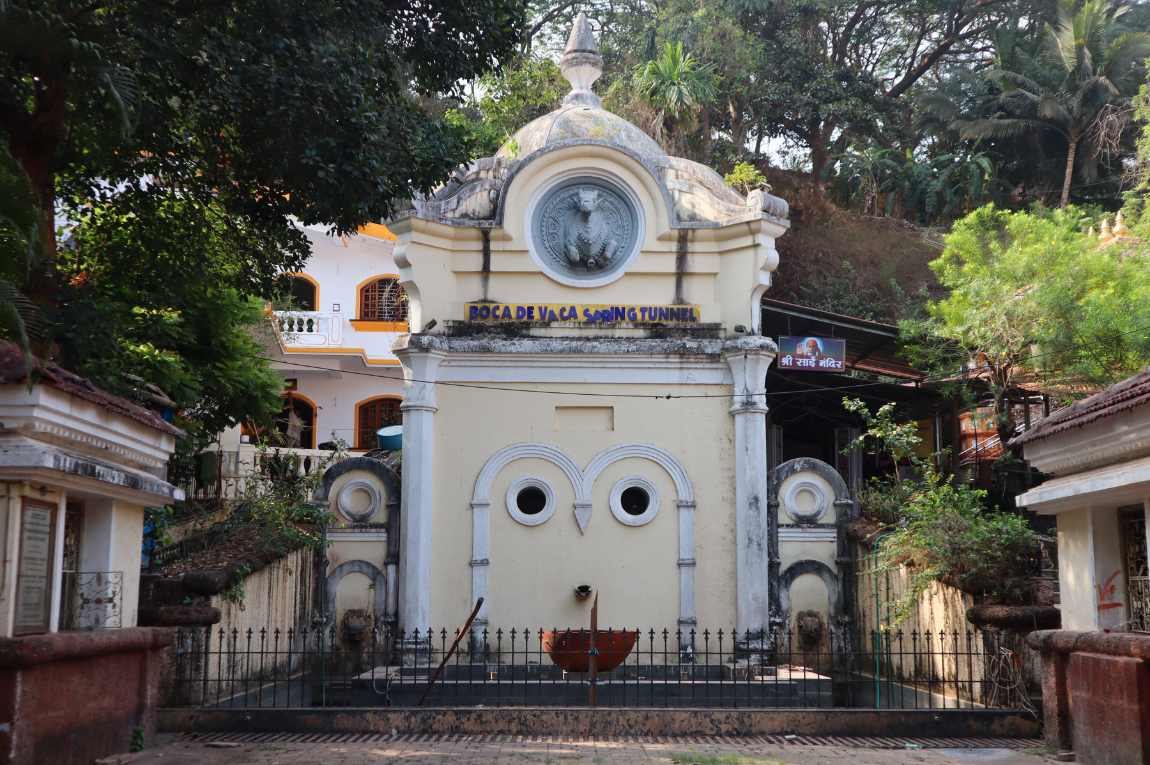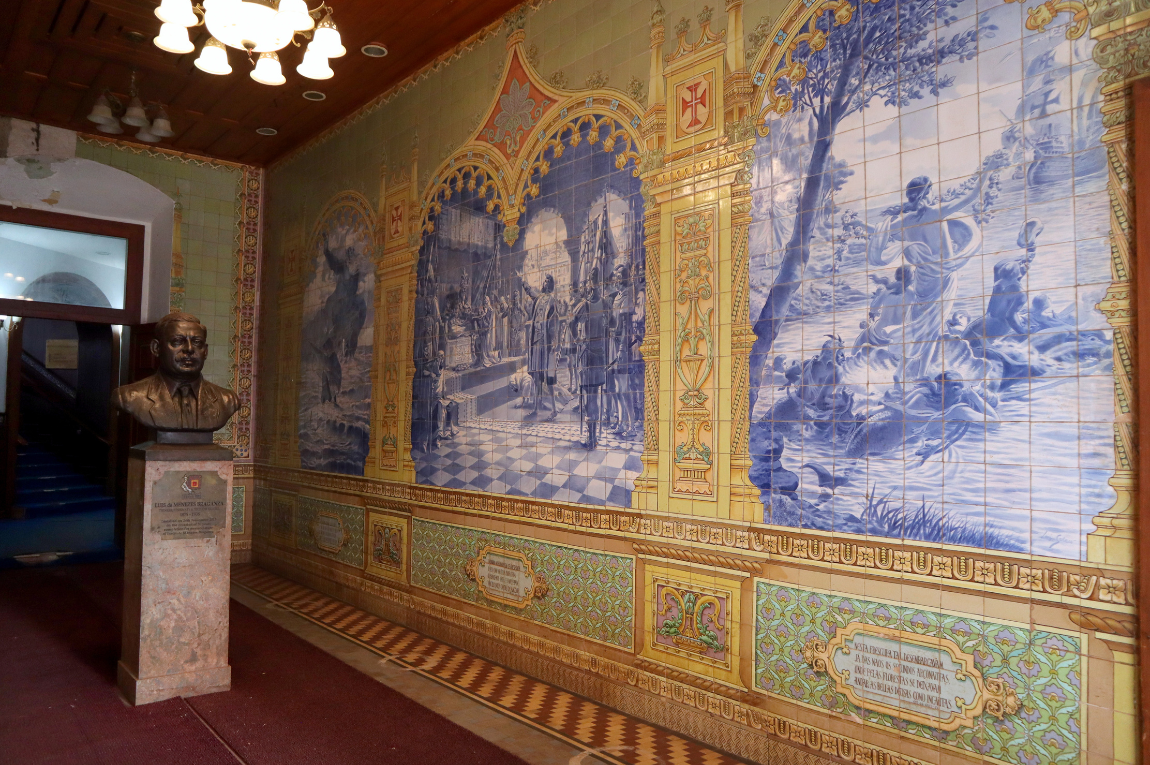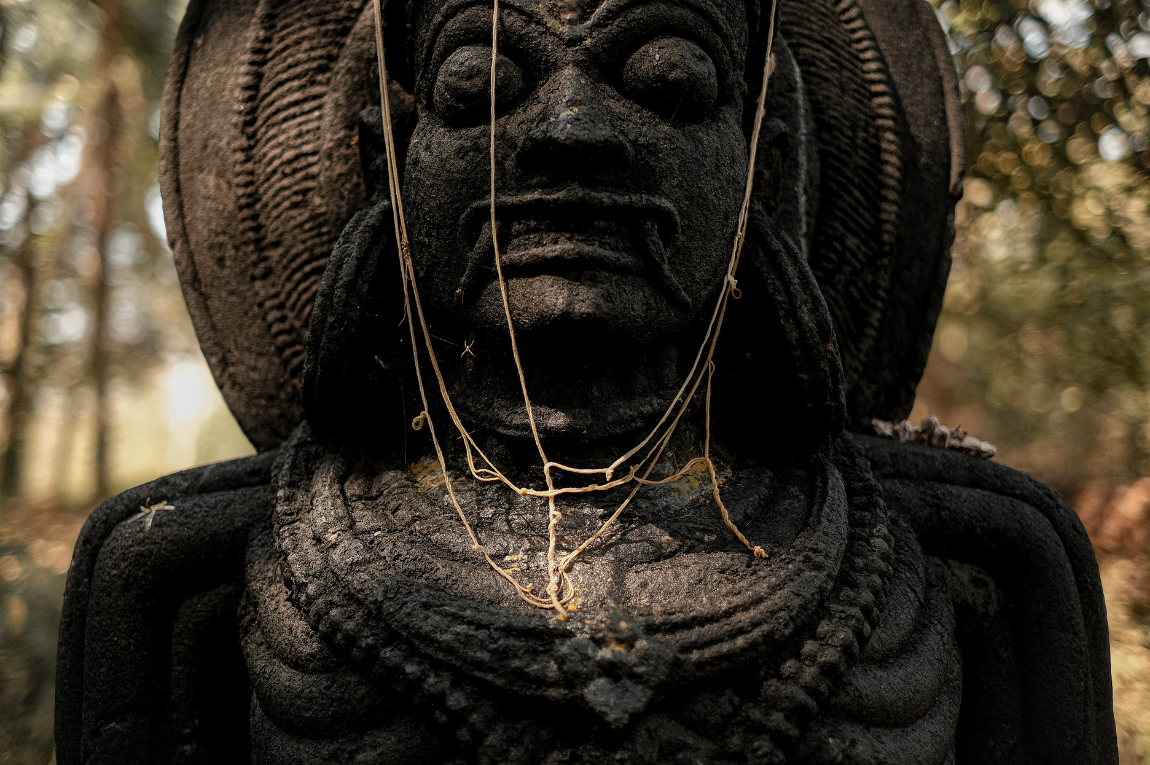My education happened by the window. In my home in North Goa, the front door opened onto a balcony with stepped seating. It is here that us siblings sat, heads bowed, poring over homework. The seats didn’t face the road so our distractions were minimal — a chikoo tree on one side, and a lime tree on the other. In the monsoons, the shut windows allowed in enough light to illuminate our books.
Those windows have been a constant in the Lobo family, present through the generations. Through celebrations, weddings and funerals, parties and prayer, two oyster shell windows have stood guard, weary with age but unflappable.
Oyster shell windows are a common feature in old homes of upper caste Goan Catholics. These wooden windows are fitted with iridescent oyster shells in a lattice pattern. They offered privacy from outside eyes while filtering in subdued light, but not the heat. “They were durable, long-lasting, didn’t break easily and served the purpose, allowing light to enter during the day and in the evenings,” says Marius Fernandes, who has a 180-year-old house in Divar with these windows.
Windowpane oysters (Placuna placenta) were sourced from riverside beaches, found in the Zuari estuary. These oysters are bivalves with translucent shells, ranging from colourless to silvery white, that are flat, thin, smooth, rounded and glossy. The flatter shells with clear nacre, or mother of pearl, are collected, cleaned, polished and shaped into squares or rectangles, and fitted to the windows’ grooved wooden slats.
In Sangeeta M Sonak’s Marine Shells of Goa, I read that “these oyster shells were indigenous substitute for glass, which was not locally available then. These shimmering shells of mother of pearls or ‘capiz’ or ‘karepa’ as they are locally called, form exquisite ornamentation.” The Voyage of Francois Pyrard of Laval, from 1616, also mentions windowpanes [in Goa] made with fine and smooth oyster shells. Once glass became popular, many of these windows began sporting glass cut-outs as peepholes.
Goa still sports many iridescent shell windows in villages in the North and heritage houses in the South. On a walk through Fontainhas in Panjim, I recently spotted many such windows. The white bungalow with yellow skirting that houses the Fundação Oriente has long oyster shell windows on both floors. Past the muralled walls of Old Quarter Hostel, the restored Panjim Inn’s downstairs windows sport oyster shells. At the next clearing, the cheery yellow Afonso Guest House has windows hidden behind ornate grills. The curving road ends at a junction where a derelict maroon house shows the havoc age and neglect can wreak on these shells.
Windowpane oysters are now a rarity due to restricted supply. Overexploitation has led to a ban on their collection. “They’re facing a threat to their habitat, from pollution, dredging and more. At one point, these oysters were found in several places but are now restricted to the mouth of estuaries,” says Dr Aaron Savio Lobo, a Goa-based marine ecologist. There is demand for these windows, especially from non-Goans buying and renovating old houses, but it’s a dying craft. There’s a scarcity of skill and craftspeople who know how to clean, polish and shape these shells so they can be slotted into windows. Beyond cleaning, the shells don’t need much maintenance after they are fitted, but once they crack, they cannot be fixed and have to be replaced.
“These windows are like gold today,” Fernandes tells me. I know what he means — the oyster shell windows at my grandmother’s home are precious and unique. In the right light, as the sun rays fall on them, they certainly shimmer like gold too.
Our selection of stays across India, best visited for their design and style. Check in
Joanna Lobo is an independent journalist from Goa who enjoys writing about food, her Goan heritage, and things that make her happy. She is on Instagram at @thatdoggonelady.
Aaryama Somayaji is a freelance illustrator based in Delhi. Her clients include Penguin Random House, HarperCollins, and ASCI, among others. She is on Instagram at @highonmangoes.











Beautiful!